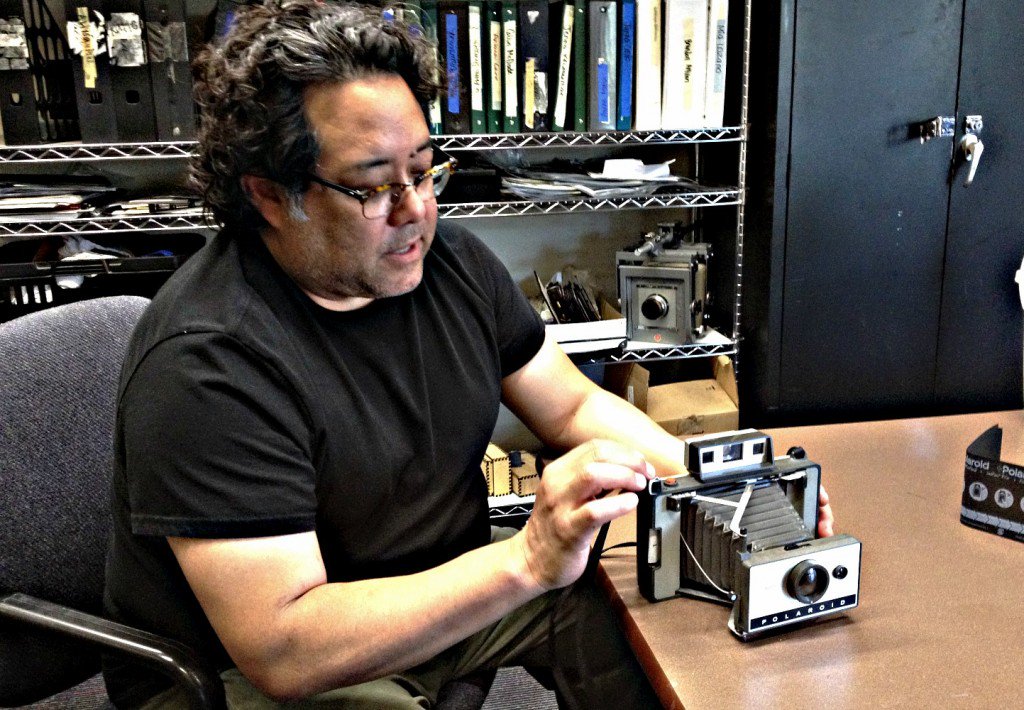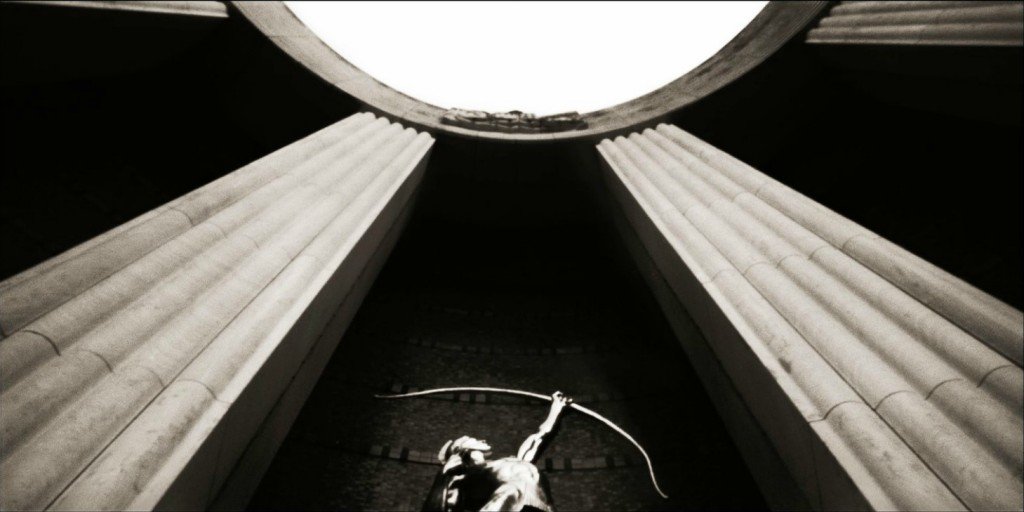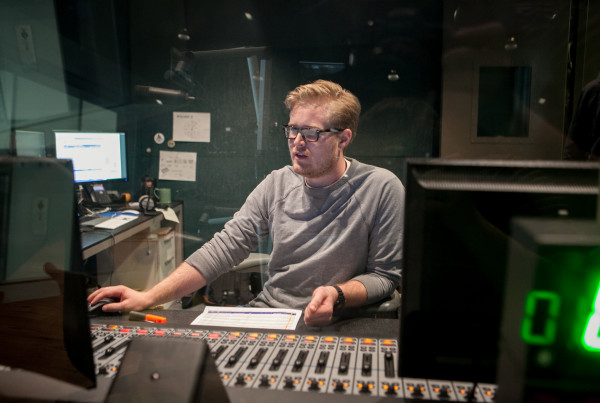From KERA:
Frank Lopez describes his photo work as ‘antiquarian avant-garde’ – the way he makes old-timey, photo technology (tintypes, wet-plate photos, pinhole cameras) do new tricks. Lately – having taught at Greenhill School – Lopez has really gone experimental with film, reducing it to chemicals and ash, making it look like abstract paintings and, yes, working in digital, turning iPhone images into tintypes. This is not your Ken Burns’ Matthew Brady.
Frank Lopez. He’s made a name for himself with photography’s “ghost” technologies – ambrotypes, pinhole cameras, tintypes – using their black-and-white imagery to capture not Cartier-Bresson’s famous ‘decisive moment’ but moods, blurs of life and culture, fleeting slips of time.
In the photo lab in the Greenhill School in Addison Texas, Lopez picks up a relatively recent ghost artifact: a classic, top-of-the-line Polaroid camera. This one’s officially a Land camera, the kind with a bellows and a timer, named for Edwin Land, the inventor and company owner. Lopez presses a button. The camera whirs, gears click.
“That’s an old sound you don’t hear very often,” Lopez says.
Not anymore anyway. Once, millions of people would recognize the sound and this entire moment, the reveal of an ‘instant’ photo as the camera ejects a slim packet containing a photo and its negative. Polaroid cameras were hugely popular in the ’50s and ’60s because they took pictures and developed them right then and there, right inside the camera. You didn’t have to send off your film to be printed.
But truly instant, digital snapshots – like the ones we take all day, everyday, with our iPhones – they bankrupted Polaroid. Twice.
Yet here’s Lopez working with half-a-dozen of the out-of-date clunkers – regular Polaroids, large-format ones, even one designed for dental shots. And he has boxes of film that Fuji made to fit the cameras. The Polaroids are only one of the many old-fangled photo technologies Lopez uses in his artworks – and teaches to his high school students.
But why teach them – when iPhones and Instagram and Photoshop dominate their lives?
“The physical negative, a physical print, a physical object that you can work with,” he says, “those are some of the things we’ve lost going digital.”
The 50-year-old Lopez grew up in the family business, Lopez Auto Service. So with him, it’s all about getting your hands into it, your hands on it, taking it apart to learn how it works. But with digital, the inner process is sealed off. It’s hard to tinker with. And tinkering with the ‘how’ of things is often what inspires artists.
“I think there’s magic in process,” says Corbin Doyle, who teaches filmmaking and digital art at Greenhill. “And I think Frank would totally agree. In arts, the process can mean something.”


















